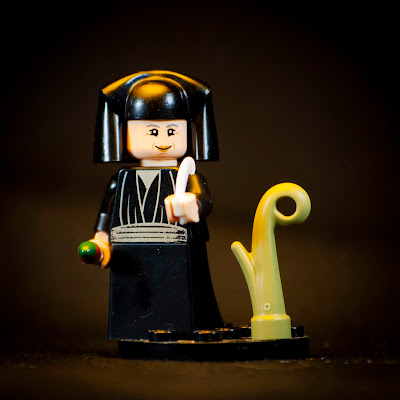St. Laurence O'Toole
St. Laurence O'Toole recently made the news, even though he's been dead for over 800 years. Why? Because of a strange and kind of spooky caper involving the theft of his heart! But Laurence was quite well-known in his own days as well - in fact he was so respected that after his death, his canonization was speed-tracked to appease his many followers.
Lifetime: 1128 to 1180
Region: Ireland
Patronages: Archdiocese of Dublin, Ireland
Iconograpy: Basket of bread; Shield; Dublin architecture
Feast Day: November 14
Region: Ireland
Patronages: Archdiocese of Dublin, Ireland
Iconograpy: Basket of bread; Shield; Dublin architecture
Feast Day: November 14
This experience, rather than causing young Laurence to lose hope or become bitter, instead instilled in him an attraction to the religious life. He joined the same monastery that had helped him earlier, and at the age of only 26 became the monastery's abbot. As abbot, Laurence sought to improve the unity of the churches in Ireland and in Rome, and used his authority to bring in the best of the Roman practices alongside the Irish practices his monks were used to. He even became a member of the Augustinian Order to lead by example regarding the importance of church unity.
Only four months after taking on the role of abbot, a famine struck the land. Through Laurence's dedicated fasting and prayer, his monastery was able to not only survive the famine, but generously offer food to the starving villagers nearby.
When Laurence was 32, the previous archbishop of Dublin passed away, and Laurence was unanimously elected his replacement, making him the first actual Irishman to serve that role. As archbishop, Laurence commanded the building of many churches in his territory, and introduced Gregorian chant to the parishes under his leadership.
Laurence's rule as archbishop was marked by austerity, fasting, and sacrifice. He wore a hair shirt under his robes and never ate meat or drank wine (though he dyed his water to look like wine so that his guests were never uncomfortable imbibing it themselves). He regularly went on 40 day retreats to the cave of St. Kevin during Lent.
Later in Laurence's life, Dublin was taken over by another king, one from outside Ireland. The years that followed were comprised of battle after battle, and Laurence regularly offered himself as mediator between the deposed Irish and the Norman invaders. He was viewed by all sides, even Vikings who occasionally raided the area, as a trustworthy and honorable man.
In one of his visits to the English king to broker peace, the king had him captured and beaten. He grew ill, and the king left to visit another area of his domain, and though sick, Laurence followed him. He died on the journey and he was buried at the monastery where he died, which quickly became a pilgrimage site.
A grand church was built on the site of his tomb to accommodate the many pilgrims that visited. After his canonization, some of his relics were taken to other sites, including his skull and bones, some of which were lost in the English Reformation. His skull, however, was eventually returned.
Additionally, St. Laurence's heart was returned to Ireland, where it has been kept in the cathedral in Dublin. However, in 2012, thieves broke into the cathedral, cut open the bars around the relic's enclosure with a specialized tool, and stole the heart in its heart-shaped box. The crime was unusual because nothing else was stolen, including golden chalices and candlesticks which were readily accessible nearby, and the thief lit candles on the altar before leaving with the relic.
For six years, there were no leads found. Until one day, someone called with an anonymous tip, claiming that he had stolen the heart and wanted to return it. They set up a drop point and the heart was finally returned to its church. But why did the thieves have such a change of heart? Apparently they told police that since stealing the heart, they had come to believe they had been cursed. A number of their family and friends died of heart attacks during the six years that they possessed the relic, and in hopes of clearing the curse, they finally returned it.






